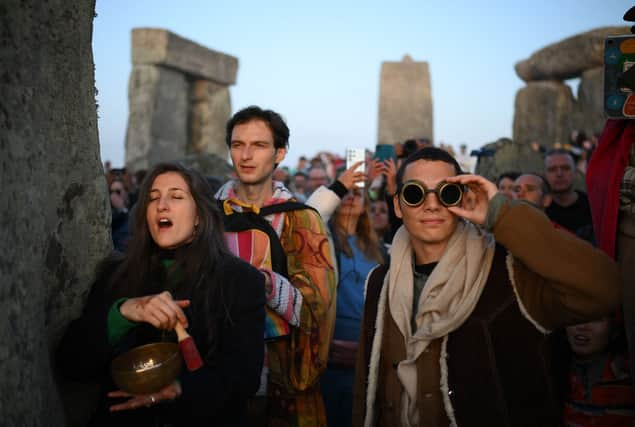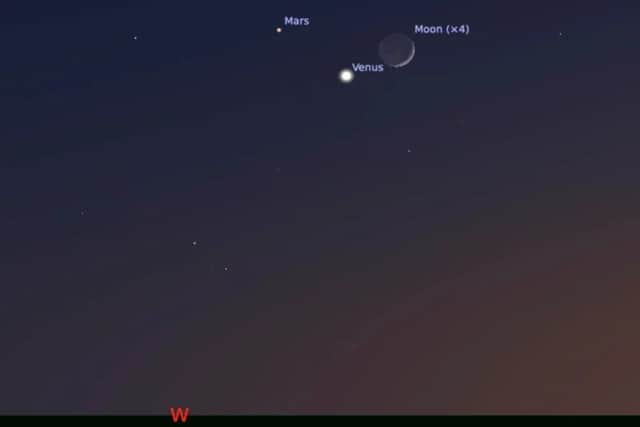Summer Solstice 2023: what is it, Stonehenge meaning, Mars, Venus and Moon alignment explained - summer start


Today (21 June) marks the summer solstice in the northern hemisphere, meaning those living on the "top" half of our planet will experience the year's longest day, and shortest night.
The summer solstice has been seen as a significant time of the year in many cultures and inspired many festivals and midsummer celebrations over the years, with traditions including lighting bonfires, having picnics, watching the sun rise and Maypole dancing.
Advertisement
Hide AdAdvertisement
Hide AdMany people also visit Stonehenge on the summer solstice to see the sun rise at the heritage site. The rising sun only reaches the middle of the stones on one day of the year, when it shines on the central altar.
But not only do those with an astronomical interest have the solstice today, there is also a pleasing planetary alignment to look forward to spotting this evening, and a handful of stargazing treats in the coming days.
A new moon and a 'celestial triangle'
Gaze towards the western horizon shortly after nightfall tonight (21 June), and you'll be greeted by a slender crescent Moon, only 13% illuminated, shining alongside the brilliantly bright planet, Venus.
If you looking along the Moon's dimly lit edge, you may be able to witness a phenomenon known as Earthshine, the faint glow on the Moon's unlit areas caused by sunlight reflecting off the Earth onto the Moon's surface. Earthshine happens during the crescent phase of the Moon, when only a small portion of its surface is directly lit by the Sun.


Advertisement
Hide AdAdvertisement
Hide AdPositioned just above this celestial duo you'll be able to find the reddish planet Mars, completing something of a 'celestial triangle' in the night sky. On Thursday evening (22 June), the crescent moon will be illuminated to 21%, and will appear in the vicinity of Regulus, the brightest star in the constellation Leo and the 21st brightest star visible in the night sky.
Though the star itself is approximately 77 light-years away from our solar system, it and the Moon will appear to share the same space in the night sky for a while. Trace the Moon and Regulus towards the northeastern horizon, and your eyes will fall upon the faint Mars, and the luminous Venus once again.
What is the summer solstice?
The summer solstice is an astronomical event that occurs annually in June, and marks the official beginning of summer in the Northern Hemisphere and the beginning of winter in the Southern Hemisphere. The word "solstice" comes from the Latin words "sol" (sun) and "sistere" (to stand still), indicating the point when the sun appears to reach its highest or lowest point in the sky.
During the summer solstice in the Northern Hemisphere, which usually falls on 20 or 21 June, the sun reaches its highest point in the sky, resulting in the longest day and the shortest night of the year.
Advertisement
Hide AdAdvertisement
Hide AdIt is the moment when the North Pole is tilted closest to the sun, causing the sun's rays to be most directly overhead at the Tropic of Cancer (23.5 degrees north latitude). This leads to the longest period of daylight for the year in the Northern Hemisphere.
Conversely, in the Southern Hemisphere, the summer solstice occurs around 21 or 22 December, marking the longest day and the beginning of summer. During this time, the South Pole is tilted towards the sun, resulting in the sun's rays being directly overhead at the Tropic of Capricorn (23.5 degrees south latitude).
The summer solstice has been celebrated and observed by various cultures throughout history. It is often associated with festivals, rituals and traditions that honour the sun and the cycle of seasons. Additionally, the summer solstice holds symbolic and spiritual significance for many, representing a time of abundance, growth and vitality.
Comment Guidelines
National World encourages reader discussion on our stories. User feedback, insights and back-and-forth exchanges add a rich layer of context to reporting. Please review our Community Guidelines before commenting.
